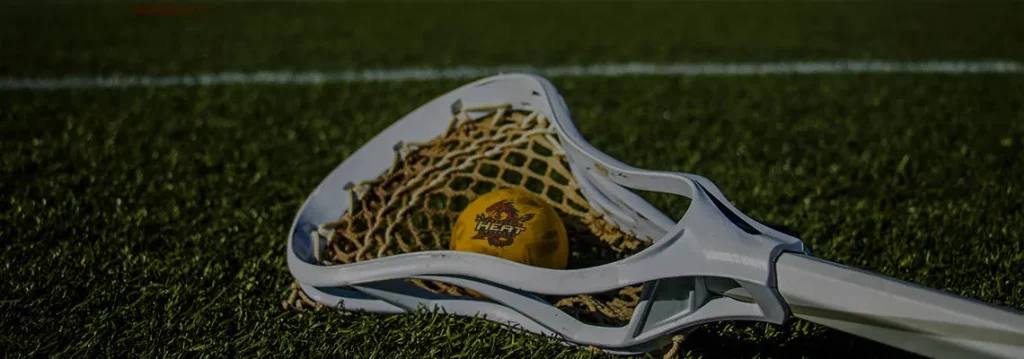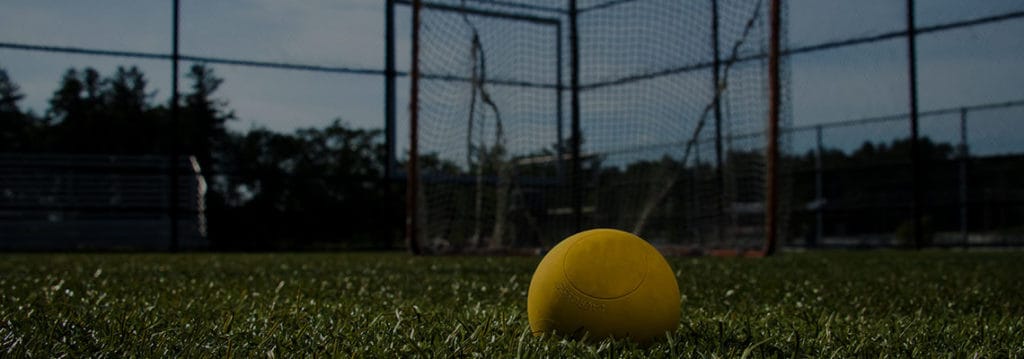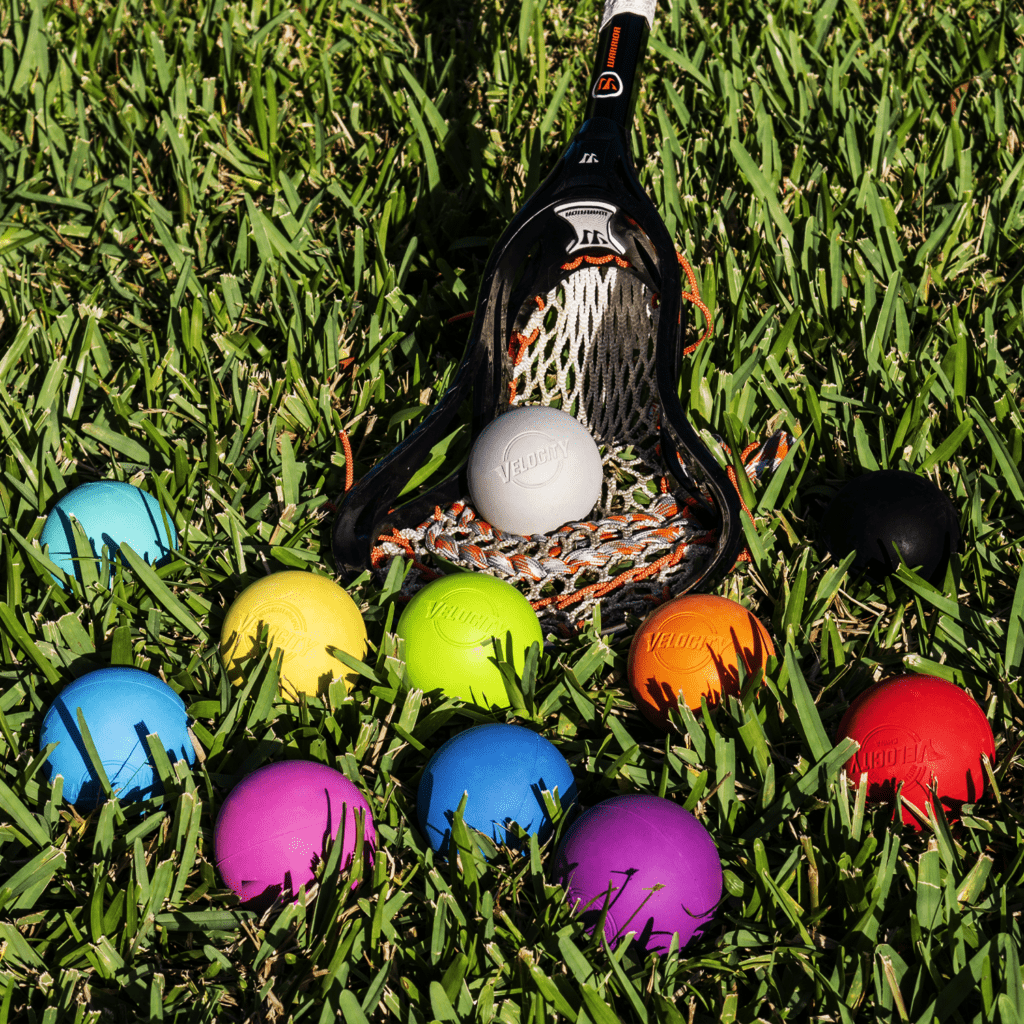Lacrosse Ball Size, Weight, Types, Materials, and Appearance: The Complete Guide to Lax Balls
Home » Lacrosse Blog » Lacrosse Ball Size, Weight, Types, Materials, and Appearance: The Complete Guide to Lax Balls
No game of lacrosse is complete without the core component: the lacrosse ball. Yet, how much do we really know about this essential equipment?
If you’ve ever wondered about the lacrosse ball size, pondered the diameter of a lacrosse ball, or been curious about the different lacrosse ball types, then you’re in the right place.
Our definitive guide dives deep into every facet of this crucial game element, from its appearance to its composition. And, as we set out on this lacrosse ball guide just remember this – all your lax ball needs are met in our lacrosse ball store!
From custom lacrosse balls to lacrosse practice balls, NOCSAE ball varieties, and even textured lacrosse balls – we’ve got the highest-quality offerings at unbeatable prices with world-class customer support. That being said, what is a lacrosse ball?
What is a Lacrosse Ball?
A lacrosse ball is the pivotal element around which the entire game of lacrosse revolves. It’s the object players pass, shoot, and defend in matches, acting as the central focus of the sport.
The Primary Function of a Lax Ball
The primary function of a lacrosse ball is straightforward: it serves as the medium of play in lacrosse matches.
Players cradle, pass, catch, and shoot the ball with their lacrosse sticks, aiming to score by landing it in the opponent’s goal. The ball’s specific weight and diameter provide the right challenge for players, ensuring the game remains competitive and engaging.
So, what is a lacrosse ball used for? The immediate answer points towards its integral role in the sport. That being said, even people who have never stepped foot on a lacrosse field use these balls…
Uses Beyond the Game
Many have discovered the ball’s efficacy in therapeutic contexts, using it for muscle massage and myofascial release. Its firm yet flexible structure makes it an excellent tool for targeting muscle knots and relieving tension.
Additionally, the diameter of a lacrosse ball makes it suitable for hand-eye coordination drills, even outside of traditional lacrosse training. We’ve seen F1 drivers using lacrosse balls to hone in their reaction time, too.
What Does a Lacrosse Ball Look Like?

Whether for sport or health, the lacrosse ball’s applications are surprisingly varied, showcasing its multifaceted nature. But if you fall under the umbrella of non-lacrosse player, you may be wondering…what does a lacrosse ball look like?
Color Varieties
The most noticeable feature of a lax ball is its color. Balls are typically white, especially for men’s field lacrosse. This ensures visibility against the green backdrop of grass fields.
However, other colors have emerged as the sport evolves and branches into various forms. Women’s field lacrosse typically uses yellow balls, while orange is a popular choice for indoor or box lacrosse.
A multitude of colors, including blue, green, and pink, have made their way into practice sessions and promotional events, adding a touch of vibrancy to the game.
Markings, Branding, and More
While the color of a lacrosse ball can vary, certain standardized features remain consistent. The ball usually comes devoid of any raised seams or stitches. Instead, the surface is smooth, with only minimal branding or markings.
Most lacrosse balls will have a brand logo stamped onto them. If they’re certified (which is crucial for official play), you’ll notice a “Meets NOCSAE Standard” stamp.
This certification ensures that the ball adheres to safety and performance standards set by the National Operating Committee on Standards for Athletic Equipment (NOCSAE).
The absence of excessive markings and branding ensures that players can predict the ball’s movement, leading to a fair and consistent game.
What Are Lacrosse Balls Made Of?
Lacrosse balls are the result of a precise combination of materials and manufacturing processes that ensure durability, consistency, and safety. So, what are lacrosse balls made of? And how are they brought to life?
Rubber, Silica, Pigments, and More
Natural or synthetic rubber is the primary material used in the production of a lacrosse ball. This rubber ensures the ball’s bounce and resilience, both essential characteristics for the demands of the sport.
Stabilizing agents like silica are added to the rubber mix. This helps maintain the ball’s shape, preventing it from becoming too soft or too hard.
Pigments are then introduced to give the ball its color, be it the traditional white, vibrant yellow, or any other shade.
It’s worth noting that the pigments, along with other materials, must meet specific safety standards, especially since lacrosse balls come in contact with players’ skin and the ground multiple times during play.
The Process of Bringing Lax Balls to Life
Transforming these materials into the lacrosse ball we recognize begins with mixing the rubber compound with the stabilizing agents and pigments.
This mixture is then molded under heat and pressure in spherical molds, ensuring the perfect diameter of a lacrosse ball. After the molding, the balls are cooled and set. The journey is far from finished, though.
Quality control is the next crucial step. Each ball is inspected for any manufacturing defects, inconsistencies in weight, or imprecise measurements.
Those that pass this rigorous scrutiny are then stamped with the necessary branding and certifications, such as the “Meets NOCSAE Standard” mark.
What starts as a blend of rubber, silica, and pigments emerges as a high-quality, durable, and consistent lacrosse ball, ready for the intensity of the game. Let’s now look at the lacrosse ball size, diameter, weight, and other defining characteristics.
Average Lacrosse Ball Size and Weight
Across all the different lacrosse ball types (more on that in a moment), there is a fairly uniform lacrosse ball size. We’ll get into the average lacrosse ball weight and diameter in just a moment – first, let’s talk about why lacrosse ball size matters.
Why Lacrosse Ball Size Matters
The diameter of a lacrosse ball directly affects how players handle, pass, and shoot the ball. A size that’s too large would make catching and cradling cumbersome, while a ball too small could slip out of the pocket easily or be harder to intercept.
The standard size ensures that players have consistent experience across practices and matches, and that skills learned and developed are not distorted by variable ball sizes.
The Role of Lacrosse Ball Weight
Much like its size, the weight of a lacrosse ball is crucial for the game’s fluidity and safety. A heavier ball could lead to more significant injuries upon impact, while a lighter ball might fly unpredictably, making it challenging for players to gauge its trajectory or speed.
An appropriate weight ensures that when players pass, shoot, or defend, the ball responds in a predictable manner, allowing for strategic gameplay. Consistency is critical so that players can perform their best without variability from game to game.
Standard Measurements Across Lax Balls
So, what is the diameter of a lacrosse ball? What is the standard lacrosse ball weight?
The diameter of a lacrosse ball typically sits around 2.5 inches (or roughly 63.5mm). This works out to a circumference of around 7.75 inches to 8 inches. As for the lacrosse ball weight, it usually ranges between 5 to 5.25 ounces (141 to 148 grams).
These measurements are the result of extensive testing and consideration to ensure optimal performance and safety during play.
Are There Different Lacrosse Ball Types?

We briefly touched on this earlier, but yes – there are different lacrosse ball types. While the lacrosse ball size and weight remain fairly uniform, the use-case changes for different settings, such as gameplay vs practice.
Game vs Practice Balls
All lacrosse balls might seem the same to an outsider, but there’s a distinction between game balls and practice balls.
Game balls are crafted to meet strict standards ensuring consistent performance during official matches. They must be of a certain weight, size, and resilience.
Practice balls, on the other hand, might slightly vary in these aspects. They’re designed to be durable, enduring countless hours of beginner lacrosse drills, but they might not offer the same game feel as official game balls. They may also be more affordable.
NOCSAE Certification
Safety and consistency are paramount in lacrosse, leading to the introduction of the NOCSAE (National Operating Committee on Standards for Athletic Equipment) certification for lacrosse balls.
As we touched on earlier, balls with this certification have undergone rigorous testing for weight, size, bounce, and other crucial factors. NOCSAE certification ensures that the balls used in official games meet the highest safety and performance standards.
That being said, there are other types of certifications as well – including NCAA for college play (you should get used to playing with these if you’re pursuing a lacrosse scholarship) and NFHS for high school athletics.
Specialized Balls Like Our Textured Variety
Innovation doesn’t stop at practice and game balls. There are specialized lacrosse ball types designed for unique needs.
For instance, our textured variety is tailored to provide enhanced grip, making it easier for players to handle, especially in adverse weather conditions. These maintain their grip for much longer than their smooth counterparts, too.
Such innovations aim to improve player experience and cater to specific training or gameplay needs. This leads us to the next topic in our guide to lax balls – where can you find the best bang for your buck online?
Where to Get the Best Lax Balls Online
Shopping for sports equipment, including lacrosse balls, has never been more convenient than it is today in the digital age. There are many online retailers offering lacrosse balls online, but only one of these is the right place for you to shop.
Before we introduce you to our selection of world-class lax balls, let’s highlight what you should keep in mind when shopping to make sure you get the quality you deserve without breaking the bank.
What to Prioritize When Buying Lacrosse Balls
As we’ve said a few times now, not all lacrosse ball types are created equal. Here’s what you need to prioritize if you want to get the best balance of quality and affordability:
- Certification: Ensure the ball has a NOCSAE certification, guaranteeing that it meets the necessary safety and performance standards. You may also need to look into NFHS or NCAA certification depending on where your balls will be used.
- Material and Durability: High-quality rubber ensures a longer lifespan for the ball. Check the product description for any mention of the material’s quality.
- Purpose: As discussed already, game balls and practice balls can differ. Choose based on your specific needs. You may need just one or the other, or you may need both.
- Customer Reviews: These offer invaluable insights into the ball’s real-world performance, especially in terms of durability and consistency.
If you want to enjoy peace of mind knowing you’re shopping with a company you can trust, though, your search for lax balls ends right here at Lacrosse Balls Direct…
Why Lax Players, Coaches, and Organizations Alike Trust Us
Our dedication to quality and performance is unmatched. We understand the intricacies of lacrosse and the importance of having reliable equipment, and we’re passionate about sharing our passion for this game through every product we sell.
In fact, a portion of our sales are set aside to donate back to the the game we’ve come to love so much!
All our lax balls undergo rigorous testing, ensuring they not only meet but exceed industry standards. Moreover, our continuous engagement with the lacrosse community builds a bond of trust and leads to constant improvements.
But, because we buy our balls factory directly, we’re able to pass those savings onto you. You can get even better savings when you buy in bulk. We can customize your balls for your team, too!
You can cross off other items on your lacrosse gear list with us, too. We have a lacrosse ball bag collection along with the best lacrosse nets. You can even design your lacrosse team uniforms here with us!
Your experience is backed by a 100% satisfaction guarantee, meaning you can place your order today with complete confidence. So, take a look around and see all that we have to offer. But before we close our lacrosse ball guide, here are some tips on lax ball maintenance and care.
A Brief Word on Lacrosse Ball Maintenance and Care

Lacrosse balls, like all sports equipment, benefit from regular care and maintenance to ensure their longevity and optimal performance. Here are some quick tips to keep your lax balls in prime condition:
- Cleaning: It’s a good idea to wipe down your lacrosse balls with a damp cloth to remove dirt and grime after each use. For more stubborn dirt, a mild soap can be used, but always ensure the ball is thoroughly rinsed and dried afterward. You may consider a more robust lacrosse ball degreaser as well.
- Storage: Store your lacrosse balls in a cool, dry place. Avoid areas with extreme temperatures, as excessive heat can affect the ball’s material and shape. Similarly, cold temperatures can make the rubber harder and less responsive.
- Rotation: Try to rotate your lacrosse ball usage. This ensures even wear and tear and prolongs the life of each ball.
- Examine for Wear: Regularly inspect your lacrosse balls for signs of excessive wear, such as deep scuffs or visible deformities. A ball that’s no longer round can impact your play. Once a ball has seen its better days, consider repurposing it for other uses or recycling, if possible.
- Avoid Prolonged Sun Exposure: Direct and prolonged exposure to sunlight can degrade the rubber. If you’re practicing outdoors, it’s a good idea to collect and store the balls in a shaded area or container when not in use.
You’ll ensure that your lacrosse balls retain their quality and performance for as long as possible by following these simple maintenance and care tips. With this final tidbit covered, it’s time to bring our guide to a close.
Bringing Our Lacrosse Ball Guide to a Close
We’ve journeyed through the dynamic world of lacrosse balls, delving into the lacrosse ball size, weight, materials, and the intricate nuances that make them so integral to the game.
From understanding the subtle differences between lacrosse ball types, to the importance of NOCSAE certification and specialized textures, it’s clear that there’s more to these rubber spheres than meets the eye.
You can learn more about lacrosse for beginners in our blog. We have a guide for those wondering…is lacrosse expensive? Or, discover the fascinating history of lacrosse.
Whether you’re a seasoned player, a budding enthusiast, or a coach molding the next generation, ensure you’re equipped with the best. Trust in the expertise of Lacrosse Balls Direct for your next purchase. Because every game, every pass, every shot counts!
